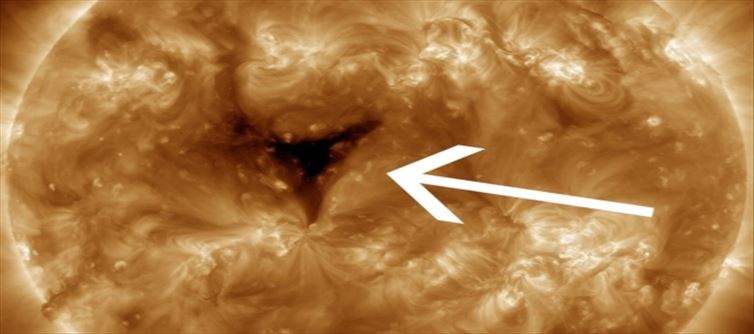
As per report in an extraordinary celestial event, a massive hole, measuring over 60 times the diameter of the Earth, has opened in the Sun’s atmosphere. Known as a coronal hole, this has triggered concerns among scientists and space enthusiasts.
Coronal holes are areas on the sun where the solar magnetic field opens up, allowing the solar wind to escape into space. They are not fixed features but dynamic and can appear any time during the solar cycle. These energized particles can reach Earth over time and may disrupt satellites in orbit or, in rare cases, affect the electrical grid on the ground. Fortunately, scientists don’t anticipate significant disruptions from the latest coronal hole.
Moreover the appearance of the coronal hole is not entirely unexpected as the sun approaches the peak of its 11 year solar cycle, known as the solar maximum. This phase is characterized by heightened solar activity, ranging from solar flares to significant outbursts of solar wind called coronal mass ejections. Coronal holes are not visible unless observed in ultraviolet light. Earlier this week, SpaceWeather reported that the recent hole might induce minor to moderate geomagnetic storms and the appearance of the northern lights, known as auroras borealis, in the night sky.
Nobody knows how long the hole will last, but usually, they stick around for more than a month, and some can last even longer, as stated by the National Oceanic and Atmospheric Administration. Solar activity has been on the rise throughout the year, and in recent weeks, various indicators suggest an increase in solar dynamism. On november 18, a substantial “sunspot archipelago” containing at least five sunspot groups emerged, generating numerous solar storms. A dramatic “canyon of fire” eruption near the sun’s equator on november 25 resulted in a coronal mass ejection (CME) that reached Earth, causing rare orange auroras. Furthermore, on november 28, an “almost X-class” solar flare produced a cannibal CME, leading to a geomagnetic storm and illuminating lower latitudes with auroras over the weekend.




 click and follow Indiaherald WhatsApp channel
click and follow Indiaherald WhatsApp channel